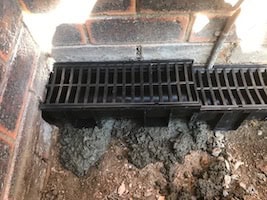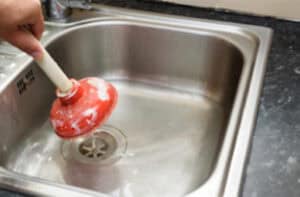The most common reason for cracking and peeling paint on ceilings is poor surface preparation. However moisture, age and sunlight are also possible causes.

The 6 reasons for peeling paint on the ceiling
- Primer undercoat wasn’t applied to the bare board.
- The first coat of paint was sprayed on. Perhaps the painter didn’t clean off the fine dust that was left behind when the plaster was sanded off – before spray painting.
- Moisture from water leaks and plumbing issues
- Fluctuations in temperature and high humidity levels can cause ceilings to expand and contract. Over time this movement can lead to paint cracking and peeling.
- Age – As paint ages it can be more prone to cracking and peeling.
- Exposure to sunlight and hard cleaning agents can accelerate a decline in the integrity of paint which can then have a tendency to crack and peel.
Why is Primer undercoat important?
Primer provides a smooth surface for paint to adhere to. Using a primer undercoat gives longevity to a paint job and minimizes the risk of cracks and peeling.
How does Primer work?
It forms a strong bond with the plasterboard and raw plaster.
Paint may initially adhere well without a primer. The problem is that over time, factors such as movement, temperature changes, and natural aging of paint come into play. These can cause cracks to appear and peeling on the plasterboard, particularly the plaster joins.
Important
Avoid low-quality primers
What does 'sanding off 'mean?
We apply plasterboard to the walls and ceilings. The joins, corners, doorways and screw holes then need to be plastered.
When the plaster is dry it can be sanded with a machine. The sanding machine is connected to a powerful commercial vacuum cleaner which captures a significant amount of the fine dust. However, corners and hard-to reach places where the sanding machine can’t get to have to be manually sanded.
Although the vacuum cleaner captures a large amount of the fine dust, there’s always residue left behind. When this fine dust hasn’t properly cleaned off, paint doesn’t hold and and over time it can peel back in places.
Trade Tips
- Always make sure the area is clean and dry before starting to paint and this will help you achieve a high-quality and durable finish.
- If paint is peeling due to moisture issues, make sure these issues are fixed before replastering.
- Regular repainting and maintenance will help to prolong the lifespan of paintwork.
Now that you know the cause, find out how to paint a ceiling and fix peeling ceiling paint on this link.


